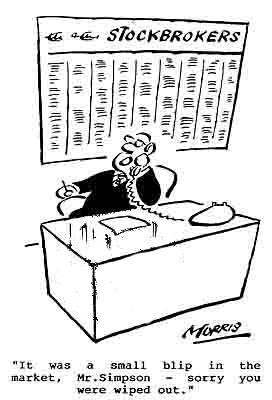Corey Rosenbloom discusses trading the SKF trading vehicle.
You Can’t Stay Wrong for Long in SKF
Courtesy of Corey Rosenbloom at Afraid to Trade.com
A lot of newer traders are drawn to double (and triple) leveraged ETFs including the inverse side, but being on the wrong side of a trade can be financially devastating quicker than most traders imagine possible. Let’s take a quick comparison of the recent moves in XLF (Financial SPDR ETF) and its double-leveraged inverse counterpart SKF.
XLF (Financial SPDR ETF):

The Financial ETF (XLF) has moved up over 60% from its March 9th bottom. Look closely at the trend structure that preceded this move – we had a “Three Push” Reversal pattern (actually a ‘five push’ but there’s no such pattern, so maybe it’s best to call it a generic “multiple swing positive momentum divergence”) into the recent lows, which also formed a doji. Odds certainly shifted at that point to favor a larger than normal counter-trend reaction, if not a pure trend reversal off that level.
Price managed to surge to break both the 20 and 50 day EMAs, and it now sits above both EMAs and – if it stays above these levels – a Cradle Trade will form which will be the impetus for an trend reversal.
What happened if you were ’short’ the XLF going into this rally? Or more specifically, what happened if you were long the SKF, which is a double leveraged inverse fund (also called a “juiced” or “supercharged short” fund)? Let’s hope that didn’t happen to you. But let’s see the chart anyway, and learn why you have to be very precise and elegant in your trades in this high-risk, high-reward fund.
SKF (Double Leveraged Inverse Financials ETF):

Assume you just had the worst timing possible and bought near $260 and rode the move all the way down to $100. That’s also a 60% loss, but in price movement terms, it was more devastating than perhaps most newer traders expected. That represented a dollar per share loss of $160, meaning if you got long 100 shares (a $26,000 position), then your shares you bought near $260 are now worth $100, or your account shows $10,000 for a $16,000 ‘unrealized’ loss.
If you look closely, the SKF made a new low not seen since September 2008. Logic would imply that, for the SKF to be making new lows, the XLF must be making new highs but clearly that is not the case. In fact, the XLF is down 60% from its September highs at $24.00 per share.
Think about that for a moment. If you bought the SKF (went 2x short the financials) at the September 2008 XLF price high at $24, and prices in the XLF have now fallen to $11 per share, take a look at your SKF position that you bought about $100 per share. You were 100% correct in your assessment that the Financial Sector was going to fall hard – and it did. However, as of today, you’re only back to break-even after a 60% fall in the XLF.
This is one of the serious pitfalls of leveraged ETFs – the rise is great, but the fall is worse than most people expect or can tolerate. Among other reasons, this effect occurs due to the way percentages are reflected in price over time.
Without getting too technical, the moral of the story is this:
If you’re going to trade leveraged and leveraged inverse funds, you need to exercise tight risk controls, not give positions ‘room to run against you,’ cut losses as soon as possible (do not let your losers run), and treat them as very short term tactical trading vehicles. You may even want to consider a radically reduced position than normal.
If you can’t resist them, then juice up your returns when you’re right or have a strong opinion on a likely price direction, but when you’re wrong on a trade, exit immediately without hesitation.


